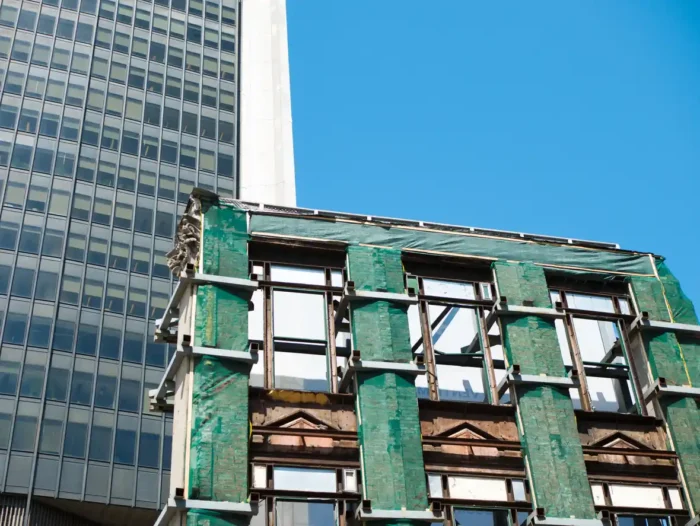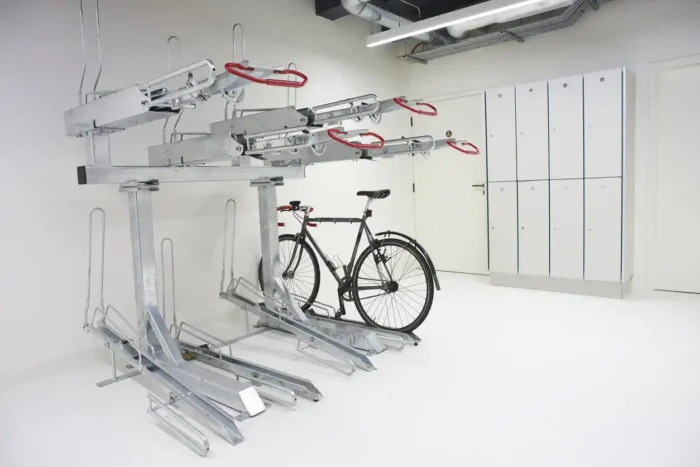How Repositioning Your Commercial Asset Can Create Value Uplift
Published
August 20, 2025
Published
August 20, 2025

Imagine this scenario: You bought a B-grade office asset — not a bad property, but not the most sought after in a precinct with some very decent amenity, foot traffic and access to major arteries.
Your primary tenant has taken up the majority of net lettable area since the old (but well-built) building had its last dated coat of paint applied to its many partitions. This tenant is leaving in a couple of months. But you knew that already.
What does “repositioning” mean in commercial property?
Repositioning is a valuable tool for property investors wanting to maximise returns on a major asset. Let’s go back to our hypothetical…
With that old tenant vacating, you’ve already decided this is not a weakness of the property — it’s a hidden opportunity.
So, you don’t just apply some far more modern colour, aesthetics and interior to the office asset — you also knock down some partitions. You create an open floor plan that allows the next occupant a far larger area to operate. You then apply some capital expenditure (Capex) to create excellent amenities: bike storage and e-bike charging stations, dedicated change rooms, secure storage for end-of-trip. You add greenery throughout, you improve the office’s exposure to natural light.
Suddenly, it’s not such a B-grade asset after all. And with a wise re-leasing campaign underway, you’re getting calls from representatives of tenants that the previous landlord would only have dreamt of securing. You lock one in, at a premium that — along with your proactive upgrades — sees your asset increase 20 per cent to 30 per cent in value.
This is “repositioning” in commercial real estate. Repositioning means refreshing a commercial asset — making strategic upgrades and improvements — that enhances its desirability from higher quality tenants.
It’s a brilliant strategy — one used by many experts in the property field — when done correctly.
Why repositioning can create value uplift

Simply put, stronger tenant demand typically leads to reduced vacancy and higher rents. Repositioning involves upgrades — either to the property itself or to the tenant profile (or both) — and that doesn’t just enhance the property value but increases its competitiveness.
If you’ve managed to turn an asset into a prospective home for tenants that are otherwise considering occupancy in a new building, you know that your efforts to reposition an older asset has worked.
Flight to quality in Australian property markets
With the commercial property market long since rebounded after COVID, we’ve seen a flight to quality across a range of precincts and asset classes. The Perth office market is a great example, with many suburban businesses now looking to take up residence in better quality buildings and office premises in the CBD and its fringes.
The good thing about repositioning — as opposed to purchasing a far newer asset at a premium — is that it bridges the gap between vacant older stock and new builds with higher price tags.
These days, tenants have higher expectations. They want their employees to want to come to work, and a high-quality workplace is the first step in achieving that.
Landlords, if they’re savvy enough to realise this, are only poised to benefit.
What tenants expect these days

Tenants expect more than just floor space. They want wellbeing areas, an abundance of natural light, living plants (and even trees), collaborative layouts to create an exciting team environment. Expected amenities are far beyond what they were in the early noughties, with gyms, end-of-trip facilities and even coffee carts now becoming far more common in the “average” office building.
For retail — particularly Large Format — the focus is on the customer. A better experience, better (and free) carparking, easier access and departure points, a better mix of stores and a range of amenities that keeps them more satisfied, for longer.
Shopping centres are making extra space for gyms, healthcare, childcare centres and high-quality food service offerings. It’s about keeping their valued clientele inside their four walls for as long as possible. This has long been the approach in America, and with a series of major redevelopments across shopping centres in WA alone, it’s obvious Australia is following suit by repositioning many of its tired shopping precincts.
How to reposition your asset to work harder for you
These four considerations will start you on your way to repositioning your asset and — if all works out as hoped — improving its long-term value.
1. Deep analysis
As should be done for every property acquisition, a thorough due diligence investigation will help uncover your targeted property’s weaknesses (lease expiries, aged interior, poor access) and thus its hidden potential.
2. Strategic refurbishment
A detailed cosmetic refinement of your property may help align the asset to the otherwise superior offerings in the market. But at the end of the day, it must align more than anything with tenant demand. If your ideal occupant wants an exceptional lobby, an array of end-of-trip facilities or wellbeing spaces — and critically, if the numbers stack up — then it could very well be in your interest to place your capital into those desires.
The right refurbishment depends on doing the deep analysis exceptionally well.
3. Leasing and sales
Here’s where all that work pays off. Through a strategic leasing campaign, you’ll be in a better position to target a higher-profile tenant than prior to your repositioning efforts.
The same goes for divestment of the asset. If you’ve done everything right to increase tenant demand for your asset, that same hunger will be shared by potential buyers of your property.
4. Refinancing
Something not considered by many when trying to get the best out of their asset is to look at perhaps the major cost of owning it: the debt.
If your commercial loan’s pricing isn’t its sharpest, then this could be an excellent target before you consider reactivating a tired premises. A lower interest rate might not only reduce the erosion of your property returns, but free up capital to apply it to repositioning your asset.
Future-proof your asset through strategic repositioning
The value-add play in property can be one of the best strategies for making your commercial asset work for you. That said, every investor must realise that this comes with risks.
There’s no guarantee that the work, money and time you put into repositioning an asset will translate to astonishing returns and dozens of national or international tenants knocking at your doors. Every consideration must be met with considerable market research. Know what your tenants want. And if you’re looking to divest, know what your buyers are looking for.
Ultimately, quality data is the most valuable tool you have.
Speaking of quality data — want more of it, delivered right to your inbox?
Join +1,000 investors receiving expert property insights
Every month, we deliver our best articles straight to our investors’ inboxes. Subscribe to our monthly newsletter and you’ll join hundreds of commercial and residential investors enjoying our news and views on the market and the economy.
Every article is free and you can unsubscribe anytime.






